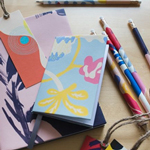
Learning how to paint over wall murals can breathe new life into your space, allowing you to transform the aesthetic according to your evolving tastes and preferences. In this article, we'll delve deep into the factors to consider before painting, essential preliminary steps to ensure a flawless finish, and finally, the actual process of painting your mural. Plus, to ensure the success of your project, we'll provide you with things to do after painting and a handy list of do's and don'ts.
How do you know if you can paint over your wall mural?
Before diving into the painting process, it's crucial to determine whether your wall mural is a good candidate for a fresh coat of paint. Painting over an unsuitable mural might end up wasting your efforts and resources. This section will guide you on the essential checks to make before grabbing that paintbrush.
Check the surface texture of your wall mural

The texture of your wall mural plays a significant role in how well the new paint will adhere. If your wall mural has a smooth texture, you're in luck. Smooth surfaces are typically easier to paint over, providing an even canvas for the new paint to grip onto.
On the other hand, textured wall murals can be a bit tricky. A textured surface might make it challenging for the paint to cover uniformly. Before painting, you might need to sand down excessively rough areas. If the texture is too pronounced, it may not be advisable to paint over it, as the results might be patchy.
Check if it has a sealed surface
Another vital consideration is whether the mural's surface is sealed. A sealed mural has a protective layer, often glossy, that can hinder the adhesion of new paint. If your mural is sealed, you may need to use a high-bonding primer or a light sanding session using fine-grit sandpaper to make the surface more amenable to painting. Not doing so could result in the paint peeling off or not sticking properly.
Check if it's in good condition

If your mural is peeling, bubbling, or showing signs of wear and tear, it's a red flag. Painting over such a mural may merely accentuate the imperfections. For instance, bubbles could burst during the painting, and peeling areas might continue to peel even after a fresh coat. In such scenarios, removing or fixing the mural might be best before proceeding. The said wall mural issues can be addressed with the help of this guide: How to fix wall mural seams
Photowall’s non-woven wallpapers have smooth and durable surfaces. Their structure allows for easier paint adhesion, resulting in a smooth finish. Their peel-and-stick wallpapers also have a smooth satin finish, allowing you to paint over them. Nevertheless, most homeowners and decorators don't worry about painting over them since they are the easiest wallpaper type to remove. So, in case you’re having second thoughts about painting over your wallpaper, you can resort to removing them— and the most complete guide on how to remove wallpaper is here: How to remove wallpaper
The preliminary steps: Things to do before painting over the wall mural
Embarking on any painting project without the proper preliminary steps is like setting out on a journey without checking your vehicle's condition. These initial tasks ensure that your efforts produce a clean, professional-looking result. In this section, we'll guide you through the essential preparatory steps.
Do the prep work

• Clear the area: Remove furniture and other items from the wall. If you can't move some large pieces, cover them with drop cloths to protect against accidental paint splatters.
• Tape off adjacent areas: Using painter's tape, carefully tape off the ceiling line, moldings, baseboards, and any adjoining walls you don't intend to paint. This ensures sharp lines and prevents paint from landing on undesired areas.
• Protect fixtures: Light switches, outlets, and other wall fixtures should either be removed or covered. If you're removing them, remember to turn off the electricity in that room for safety.
• Patch up imperfections: Inspect the wall for holes, dents, or imperfections. Fill them with spackling compound, and once dry, sand them down for a smooth finish.
Hide the wall mural seams
Wall murals, especially those in panels or multiple pieces, often have seams where the edges meet. These seams can disrupt the smooth finish of a paint job, making them visible even under a fresh coat of paint. Here’s how to effectively hide them:
Things you will need:

• Joint compound (or spackle)
• Putty knife or joint knife
• Fine-grit sandpaper (around 220-grit)
• Damp cloth or sponge
• Primer
The process:
1. Clean the mural: Begin by ensuring the mural is free from dust or debris. Wipe it down with a damp cloth or sponge.
2. Apply joint compound: Using your putty knife, apply a thin layer of joint compound over the seams. Ensure the compound is spread evenly, feathering out the edges so that there's a smooth transition between the seam and the rest of the wall.
3. Let it dry: Wait for the joint compound to dry completely. Depending on the product and the environmental conditions, this could take anywhere from a few hours to overnight.
4. Sanding: Once dry, gently sand over the filled seams with your fine-grit sandpaper. The goal is to have a smooth, flat surface without any ridges or bumps.
5. Wipe down: After sanding, wipe away any residue or dust using your damp cloth or sponge.
Ensure personal safety
When undertaking a painting project, it's paramount to prioritize your safety. Always wear safety gloves to prevent potential skin irritations from paints or primers. Protective eyewear is important to shield your eyes from irritants, especially when sanding or working with chemicals that can splatter. Lastly, always ensure proper ventilation by keeping windows open or using fans, as paint fumes can be harmful when inhaled in enclosed spaces.
The actual steps: Painting over the wall mural
Now that you've assessed your wall mural's condition and prepped your workspace, it's time for the main event: painting. The following steps are designed to be simple and easy to follow, ensuring your mural gets a fresh, new look without any hitches.
Things you will need:
• Mild soap
• Cloth or sponge
• Primer
• Roller brushes
• Paintbrushes
• High-quality latex paint (matte or satin finish recommended)
Step 1: Clean the surface

Before applying primer or paint, it's crucial to ensure the surface is clean and free from dust, grime, or grease. Using a mild cleaning solution or soap, gently scrub the wall with a cloth or sponge. Rinse with clean water if necessary and allow the wall to dry completely. More techniques on how to clean your wall mural are available here: How to clean wall murals
Step 2: Prime the surface

Once the wall is clean, you can proceed to apply a coat of primer, especially if your mural had vibrant colors. The primer ensures the paint adheres better and provides a consistent base, preventing the old mural from showing through. Apply the primer evenly, using roller brushes for larger areas and paintbrushes for edges. Allow it to dry as per the manufacturer's recommendations.
Step 3: Choose the right paint

Opt for high-quality latex paint, preferably with a matte or satin finish, as it helps mask any underlying imperfections. Remember, your chosen color and finish can dramatically affect the room's ambiance, so pick wisely.
Step 4: Apply the first coat

Using a clean roller brush, apply the paint in "W" or "M" shaped patterns, ensuring even distribution. For corners and edges, use a regular paintbrush. Once the entire wall is covered, allow the paint to dry for the time recommended on the paint can.
Step 5: Add a second coat (if needed)
After the first coat has dried, assess if a second coat is necessary. If the mural still shows through or if the paint looks uneven, a second coat can provide a more polished look. Repeat the painting process as with the first coat and allow it to dry.
Things to do after painting over the wall mural

Once the paint has dried and you've successfully transformed your wall mural, a few essential steps will help you perfect your interior decorating project and finish like a pro. Here are some key steps to consider:
Inspect for Imperfections
After the paint dries, inspect the wall closely in different lighting conditions. Look out for any missed spots, drips, or inconsistencies in the paint. Small bubbles or brush marks can be common, especially if the painting is done in a hurry. It's essential to address these imperfections promptly to maintain a professional look.
Touch up as needed
Use a small brush to apply additional paint to areas that may need a little extra attention. This could include spots where the paint is too thin or where there are visible blemishes. Ensuring even coverage and a uniform finish will enhance the overall appearance of your room.
Clean and store painting supplies
Clean brushes, rollers, and other tools with appropriate solvents (like water for latex paints or mineral spirits for oil-based paints). Once clean, store them in a cool, dry place. This prolongs their lifespan and ensures they're ready for future projects.
Ventilate the room
Even after the paint dries, it can still emit fumes. Ensure the room remains well-ventilated for a couple of days. Keeping windows open or using fans can help disperse any residual odors and accelerate the full curing process of the paint.
The do's and don'ts of painting over wall murals

Navigating the intricate process of painting over wall murals can be daunting, especially with the plethora of advice available. To simplify, here are some definitive do's and don'ts to guide you to the perfect finish.
Do's:
• Do use an oil-based primer: An oil-based primer is excellent at sealing off the underlying mural, preventing colors and designs from bleeding through to the new paint layer. It provides a durable and adhesive surface for the paint to stick to, ensuring longevity and a smooth finish.
• Do a test patch: Before painting the entire wall, test a small patch to ensure the color and finish are to your liking.
• Do wait between coats: Allow adequate drying time between primer and paint applications, as well as between multiple paint coats.
Don'ts
• Don't overload the paint roller: Applying too much paint to the roller can result in drips, streaks, or an uneven application. Loading the roller with moderate paint and evenly distributing it on the surface is important.
• Don't rush: Take your time during the entire process, from prepping to the final coat, ensuring each step is done thoroughly.
• Don't ignore repair needs: Address any holes, cracks, or damaged sections on the wallpaper surface before painting to ensure a smooth and professional-looking result.
Painting over a wall mural can give a room an entirely new feel and ambiance. By following the steps, tips, and best practices outlined in this guide, you can ensure a smooth process and a beautiful result that lasts for years. Embrace the transformative power of paint and enjoy your refreshed space.
 Australia
Australia
 Austria
Austria
 Belgium (Dutch)
Belgium (Dutch)
 Canada (English)
Canada (English)
 Denmark
Denmark
 Estonia
Estonia
 Finland
Finland
 France
France
 Germany
Germany
 Ireland
Ireland
 Italy
Italy
 Luxembourg (French)
Luxembourg (French)
 Netherlands
Netherlands
 New Zealand
New Zealand
 Norway
Norway
 Poland
Poland
 Portugal
Portugal
 Romania
Romania
 Singapore
Singapore
 Spain
Spain
 Sweden
Sweden
 Switzerland (French)
Switzerland (French)
 USA
USA
 United Kingdom
United Kingdom
 Other Countries
Other Countries




